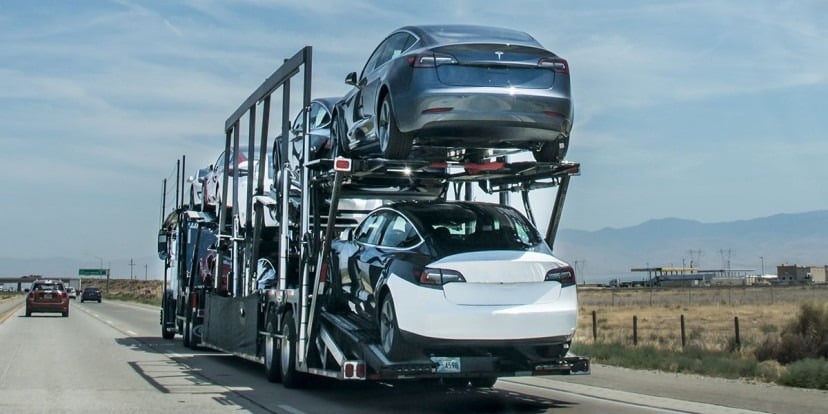Winter poses unique challenges for transporting electric vehicles compared to gas-powered cars Transporting An Electric Car.
Below are some key tips from industry specialists on safely shipping an EV when temperatures drop.
Check the battery’s state of charge – Transporting An Electric Car
Cold temperatures can significantly reduce an EV battery’s range, so it’s important to fully charge the battery before traveling in winter.
Experts recommend charging to at least 80% capacity. This leaves some buffer in case you need to use climate controls or other energy-intensive features like heated seats while en route.
Consider using battery pre-conditioning
Many EVs have a battery pre-conditioning feature that warms the battery before use. Activating this 30 minutes to an hour prior to departure can help maximize available range in frigid conditions.
Pre-conditioning prevents the battery from discharging as quickly to power the vehicle and climate controls when you hit the road.
Watch your speed and avoid rapid acceleration
Driving more slowly and gradually applying the accelerator can help conserve energy usage. Rapid acceleration requires a lot more electricity from the battery compared to maintaining a steady speed or slowing down gently.
Sticking to the speed limit and easing off the pedal is recommended, especially when roads are snowy or icy.
Plan bathroom/charging stops in advance
| Charging Location | Amenities |
| Supercharger station near exits 350 and 352 on I-80 W in Pennsylvania | Restrooms, snacks, seating area |
| Electrify America charger off I-94 exit 259 in Michigan | 24-hour convenience store, short walk from parking area |
When transporting an EV long-distance in winter, it’s a good idea to map out charging stops and any places nearby to use the restroom, grab a bite to eat, or take a short break to stretch your legs.
Knowing these details in advance helps plan for optimal recharging and comfort stops along the way.
Turn on the climate controls before unhooking
If shipping your EV in an enclosed transport carrier, make sure to turn the climate settings to your preferred temperature about 10-15 minutes before unhooking the vehicle.
This gives the cabin ample time to warm up or cool down prior to driving, meaning less initial energy usage from the battery once you hit the road in order to maintain passenger comfort.
Keep an eye on the temperature gauge – Transporting An Electric Car
When transporting an electric vehicle long-distances in cold weather, be sure to monitor the temperature gauge or screen. Frigid external temperatures could potentially cause the battery to get too cold for optimal performance or safety.
If battery temperature seems too low, slowing your speed or activating pre-conditioning features can help warm it up. Battery over-cooling should always be avoided.
Transporting An Electric Car – Consider professional transport if traveling very far
For trips spanning many hundreds of miles in extreme winter conditions, you may want to investigate using a professional auto transport carrier services. They can securely haul your EV in an enclosed, climate-controlled trailer.
This protects the battery from over-cooling while eliminating range and endurance issues for the driver. Professional transport may alleviate a lot of winter weather concerns over long hauls.
With the proper planning around battery charge levels, range conservation, stopping points, and thermal management, shipping an electric vehicle in winter is very feasible. Just take some extra precautions compared to gas cars. Consulting with an EV mechanic or technicians can also help ensure a successful long-distance winter move.

